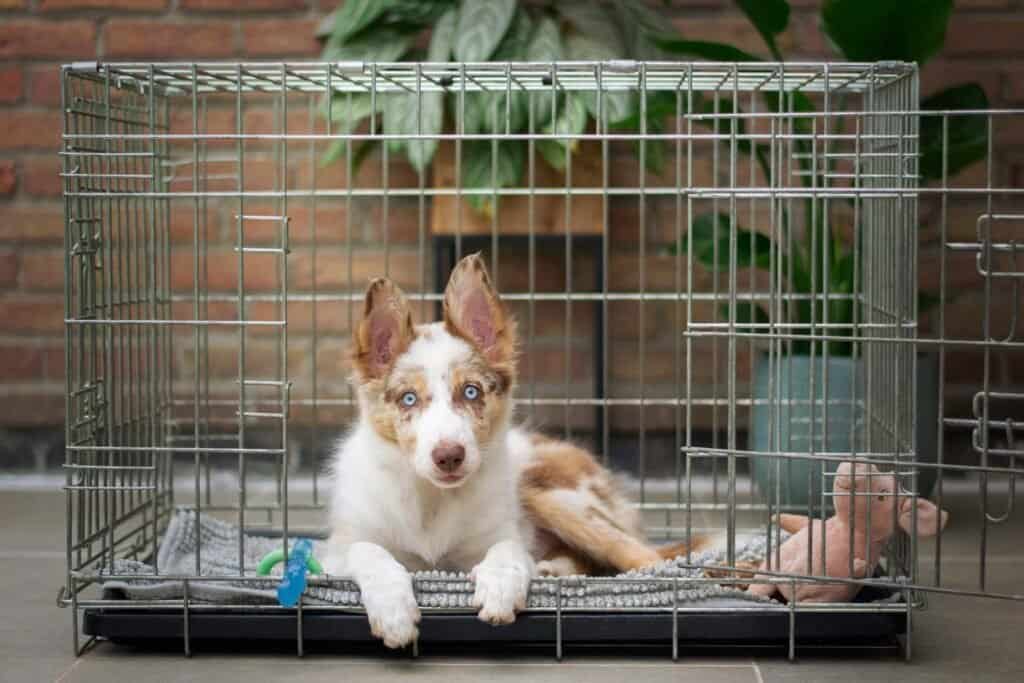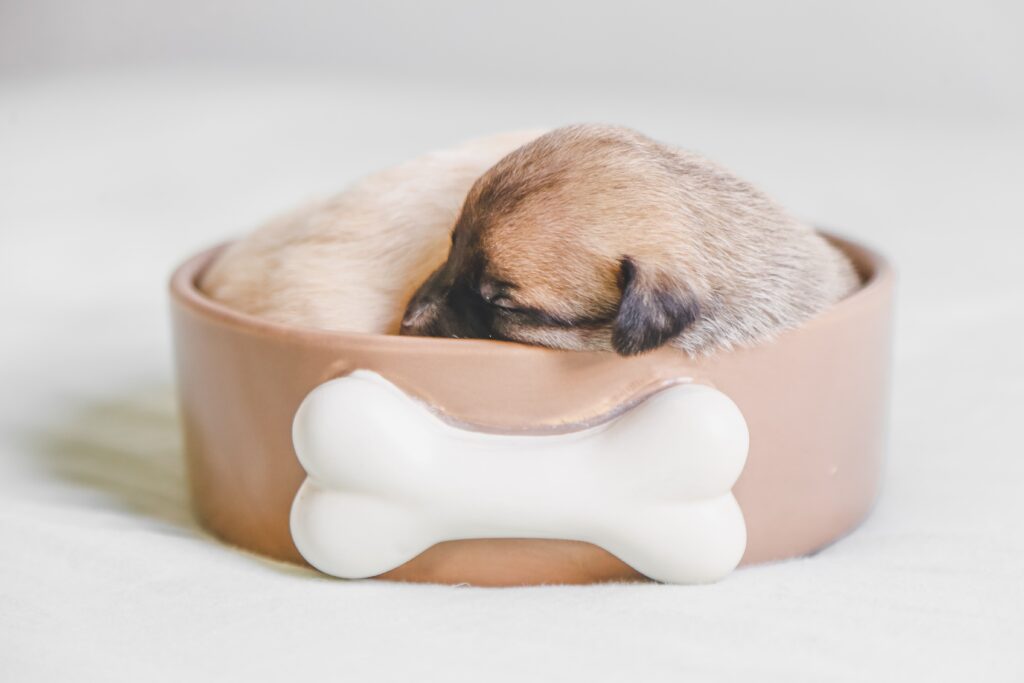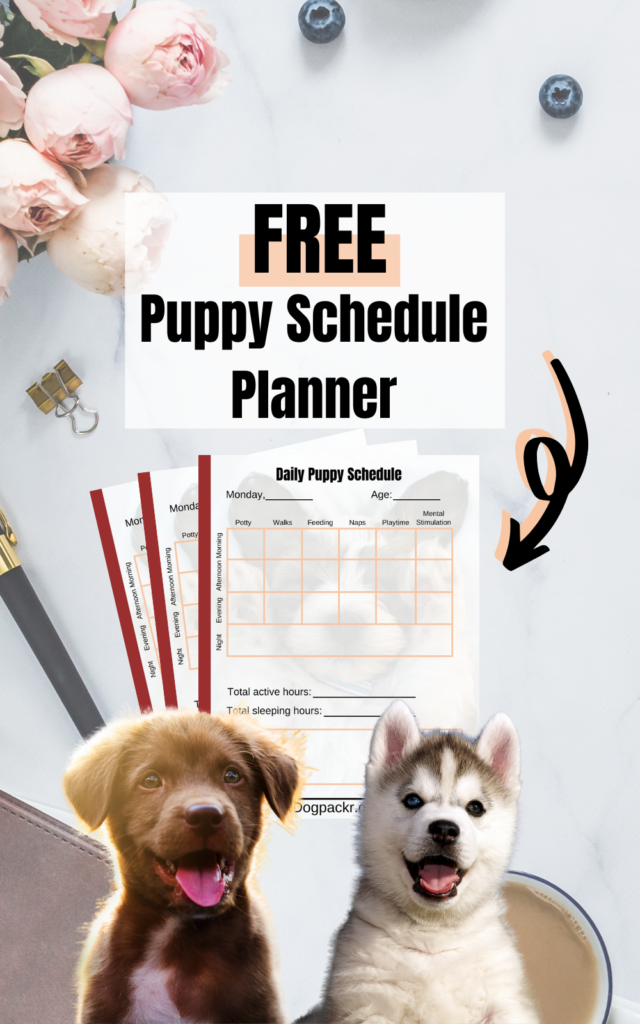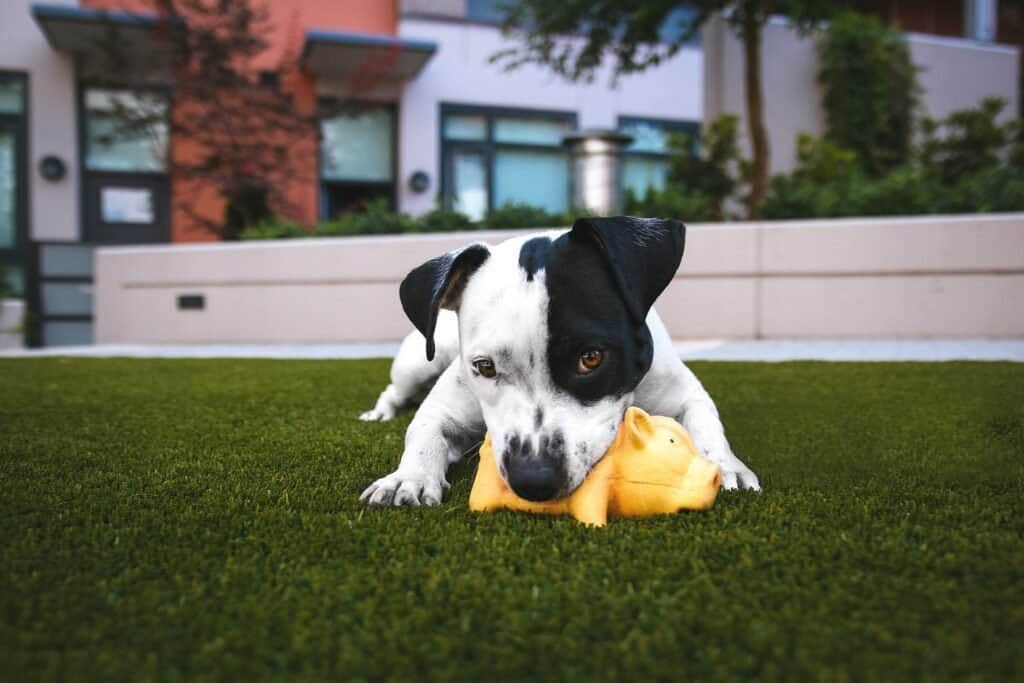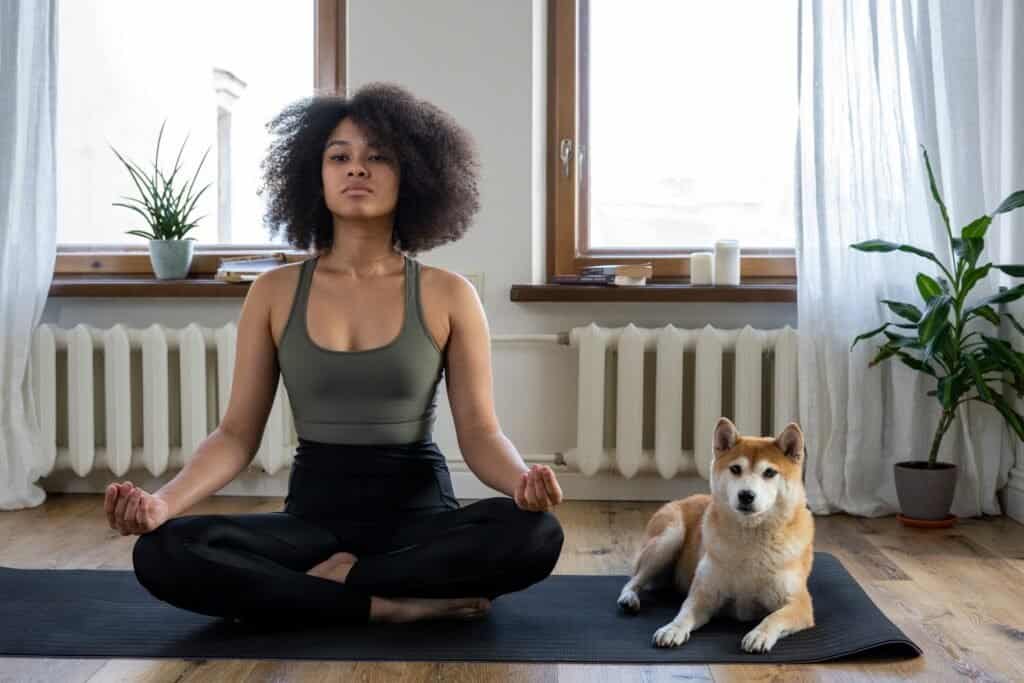Crates are great help for you and your puppy.
They’re great to help your puppy calm down. Training your puppy to spend time in them is really worth it.
But what do you do when your puppy hates his crate?
You might be wondering why he doesn’t like something that actually creates a safe space for him!
Here, you’ll find out why your puppy doesn’t want to go into his crate, and how you can gently train him to accept it.
Table of Contents
Why does my puppy hate his crate?
Crating your puppy is useful for a lot of reasons. For one thing, crating your puppy will help him settle down when it’s bedtime or time for a nap.
You can also put your puppy in his crate if he’s acting up and needs a little time out. Crates are great places where you can leave your puppy alone for a bit and know he’ll be safe, too.
But it’s hard to get much out of crate training your puppy when your puppy hates his crate!
If your puppy refuses to stay in his crate and just whines or barks when it’s time to be left alone, that’s really frustrating for both of you.
So how can you help him? The first step toward getting your puppy to like the crate is to understand why he might not like it so much.
Here are a few reasons why your puppy might hate his crate: It could be because he’s just not used to it yet. He might have had a bad experience in it. Or maybe it’s not even the crate itself, but he’s anxious about being separated from you.
Now, let’s go into a little more detail for each of those.
He’s just not used to it yet
If you’ve only just started crate training your puppy, then the problem could be that he simply isn’t used to being in the crate!
Up until this point, your puppy may have had free rein over his space. He may not be used to being confined.
And suddenly you want to put him in a box where he doesn’t get to play with you or do whatever he wants! It’s no wonder your puppy hates his crate.
That could be pretty upsetting and confusing for him. At least, at first!
However, with the right training, you’ll be able to teach your puppy that his crate is actually a nice, cozy space where he can go to hang out and relax. For more information, make sure to check out how to crate train a dog easily in 13 steps.
He had a bad experience inside
So what if your dog suddenly hates his crate? Maybe everything was going smoothly until one day, your puppy wanted nothing to do with his crate at all.
This can be confusing and frustrating. It could be a case of crate training regression.
It could also be that your puppy has had a bad experience inside the crate, and that’s made him not want to go in anymore. Maybe he had an accident that you didn’t notice right away, and he then had to sleep in it. Or maybe there’s something uncomfortable poking him in there.
Whatever the reason, the best thing to do is find out what your puppy’s bad experience might have been. This will help you make the crate more comfortable for him.
He suffers from separation anxiety
It’s very common for puppies to suffer from separation anxiety. Think of it like this: if a stranger took you away from your mama and siblings and brought you to a strange place, you’d be pretty anxious, too!
Once your puppy gets home, he’s likely to form a pretty strong bond with you. You’ll become his pack! And since dogs are pack animals, he’s not going to like it if his pack leaves him alone.
While separation anxiety can be really challenging, there are ways to help yourself and your puppy. Check out these related articles for a little more information and suggestions:
- Do Puppies Grow Out of Separation Anxiety?
- 9 Signs and Symptoms of Separation Anxiety in Dogs
- How to Crate Train a Dog with Separation Anxiety
How to help a puppy love his crate
By now, you’ve probably identified why your puppy doesn’t like his crate. That means that now you can start working on helping him learn to love it!
Make sure you also take a look at these related articles for some more general advice on crate training:
Take baby steps while crate training
Whenever it comes to any sort of training, the number one thing you need to do is go at your puppy or dog’s own pace.
That can mean taking things really, really slowly!
Even though it can take a long time and might seem tedious, taking baby steps is important. This is especially true if your puppy already doesn’t like his crate.
Trying to force him to stay in the crate when he’s already having a hard time with it is likely to make things much worse.
So pay attention to your puppy while training and make sure you’re not going too fast for him. And remember to be patient and consistent during training!
Give him a plush toy and one of your worn shirts
If your puppy struggles with separation anxiety, then that can make it hard for him to be alone in his crate. After all, you’re leaving your puppy alone without you, and that’s the last thing he wants!
You can help make it a little bit easier on your puppy by leaving something in the crate that will remind him of you. Put one of your worn shirts in the crate with him to remind him of your smell.
Putting something else he loves, like a favorite plush toy, will also help comfort him.
Make sure he’s tired before he goes in the crate
One really great way to make sure your puppy settles down quickly in his crate is by making sure he’s tired before he goes in.
If your puppy is tired out, he won’t have the energy to throw a big tantrum in the crate. Instead, he’ll just fall asleep for a much-needed nap.
There are lots of great ways to tire out your puppy. How much exercise your puppy should get does depend on a few factors. But once you know what they are, you can make sure that he’s tired before going in the crate.
Make sure you also check out these 11 tips to tire out a dog (quickly). Try scheduling play sessions like those just before a round of crate training!
Give him a chewy or yummy treats inside the crate
You may have noticed that your puppy loves chewing. That’s because dogs are mouth-based creatures. Chewing and licking things is how they learn about the world around them.
Chewing also makes your dog’s brain release a hormone called serotonin. This is an important hormone that helps to regulate mood and increase feelings of wellbeing.
So it makes sense to give your puppy a chewy or other yummy treats inside his crate! Not only will they be a good reward for him being inside the crate, but they can also help him relax.
Chewing is also a good way to keep your puppy busy and distracted while he’s in the crate!
Related puppy crate questions
How long does it take a puppy to get used to a crate?
You might be wondering if there’s a day you can mark on your calendar that will say when you’re all done with crate training.
If only that were the case!
Unfortunately, there’s no magic number of days needed to crate train your puppy. Each puppy is different, and they’ll also react to the crate in different ways.
Some puppies take just a few days to get used to it, while others take a few weeks. It can take longer if your puppy has had previous bad experiences in the crate.
Just remember to stay patient and consistent. Your puppy will get there eventually!
Should I let my puppy cry it out in the crate?
The answer to this question is actually a little complicated. While you don’t want to let your puppy cry it out, you also don’t want to teach your puppy that crying in his crate will get him out of it.
If your puppy is crying in his crate, wait until he’s stopped before letting him out. Then, you might need to step back on training for a bit. You may be going too fast for your puppy, which is what’s encouraging him to cry.
Remember—always go at your puppy’s pace!
Should I force my puppy to sleep in a crate?
Your puppy’s crate can be a nice, safe area where he can get some sleep. Having a designated area like a crate where he sleeps will help him understand when it’s bedtime and when it’s time to be more active.
If you’re going to use your puppy’s crate at nighttime, then you’ll need to make sure that you’re training him properly, without force. This will help prevent any bad experiences and make sure that your puppy loves going to sleep in his crate.
If you’re looking for a little more information, check out the guide on how to crate train a puppy at night.
Conclusion
A crate is a great way to help keep your puppy stay safe. It also provides him with a quiet place to have a nap if you need a bit of time to yourself to save your sanity.
But if your puppy hates his crate, that can really throw a wrench in things! The good news is that your puppy doesn’t need to hate his crate forever. Understanding why your puppy may not like his crate and using the above tips to help him learn to love it will make all the difference.
*Disclosure: This post may contain affiliate links, meaning, I get a commission if you decide to make a purchase through one of my links, at no cost to you.

